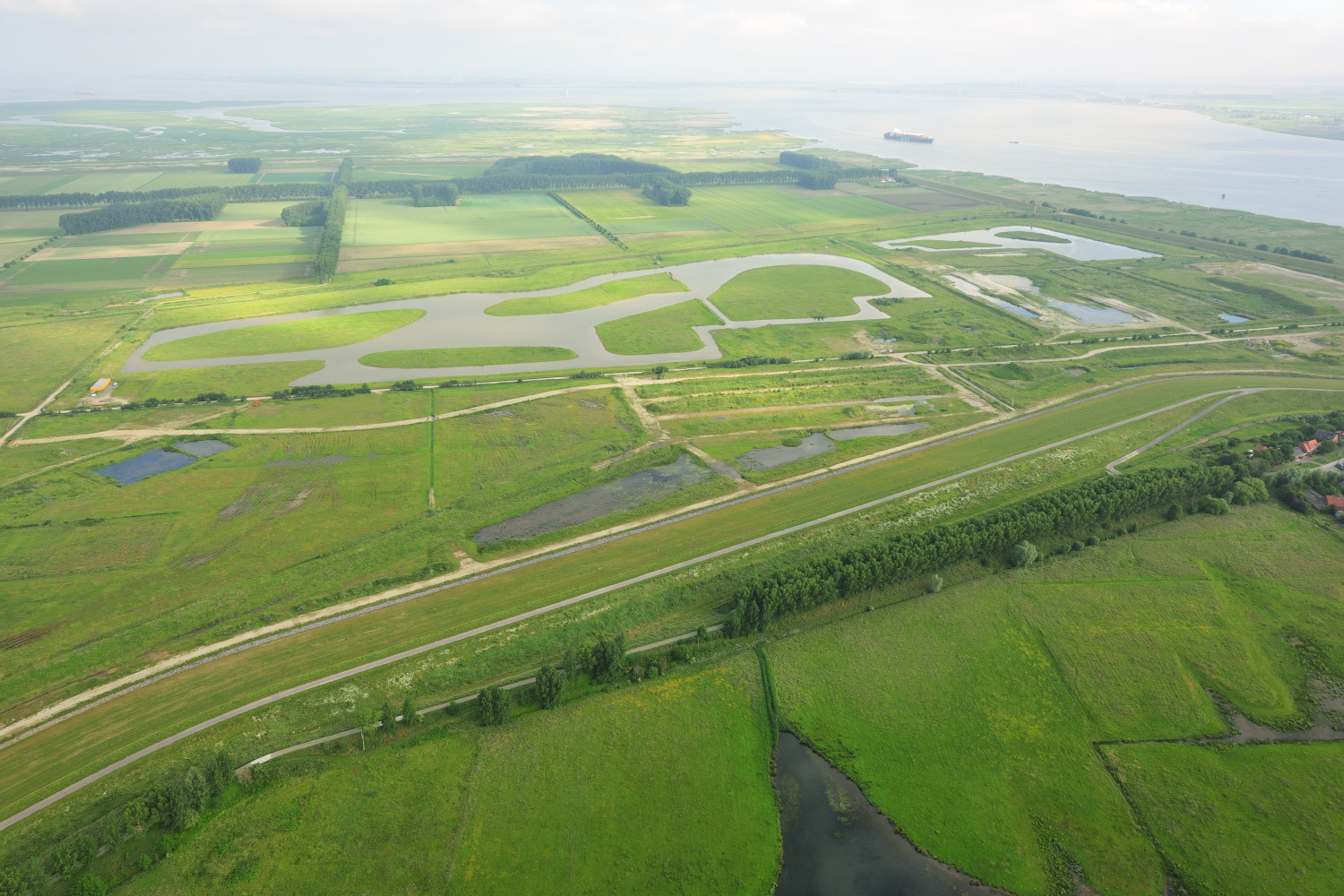The Hedwige-Prosper polders project is one of a series of projects being undertaken along the Scheldt and its tributaries as part of the Sigma Plan. It creates a new estuarine nature area and contributes to flood protection. The new natural habitats and increased flood protection is achieved by moving dike protection inland, thereby exposing the currently protected polders to the tidal influence of the Scheldt River. The new dike constructed inland (a ring levee) protects the low-lying residential area in the hinterland, together with the ring canal collecting the water from small watercourses and a fish-friendly pumping station activated in case of heavy rainfall to discharge the excess water to the Scheldt. The new dike has a height at 10.2 meters above sea level (measured by Normaal Amsterdams Peil, Standard Amsterdam Level, NAP) across most of its length. This type of project is called ‘depoldering’ and can be considered as part of the ‘managed realignment’ approach.
In total, a natural area of 465 hectares is being developed in the two former polders, of which 295 hectares are on Dutch territory and 170 hectares in Belgian territory. These 465 hectares will combine with the adjacent Saeftinghe wetlands area to create a brackish intertidal area of approximately 4,100 hectares in total. The Hedwige-Prosper polders will not be directly connected with Saeftinghe, however, as a dike containing pipelines separates the two areas and will remain in place. The creation of new estuarine nature areas is part of the Scheldt Agreements between the Netherlands and Flanders: the work at Hedwige polder is contributing to fulfilling the Dutch commitment to create 600 hectares of such areas. The resulting intertidal nature areas will be part of the work that the Netherlands and Belgium will undertake to meet obligations under the EU Habitats Directive. It is a compensation for natural areas taken over the Port of Antwerp as well as dredging of the Scheldt.
To promote the creation of the desired natural area, a system of creeks will be dug in the polders. Accompanying works include filling in the existing drainage system and removing other drainage related infrastructure, removing hard infrastructure such as roads, and removing existing vegetation and where necessary some existing marshland. Following these modifications, natural processes will be allowed to shape the area into increasingly natural conditions. These marshlands will contribute to the self-cleaning capacity of the estuary; moreover, the wetlands are an important source of silica for diatom algae which are at the basis of the food web. The creation of the new intertidal nature area is expected to result in new recreational opportunities. The proposed design includes the construction of a nature pavilion and eco-lodges, as well as a number of walking and biking paths, viewpoints, information signs, benches and parking places for visitors. A number of breeding islands are also envisaged by the project, since the area is of great ecological value and one of the few suitable breeding habitats for the very vulnerable avocet and other bird species. Temporary breeding islands built so far in the polder have already proved their value, hosting no fewer than 75 couples of avocets, as detected in summer 2020.
As of late 2014, the outer dikes had been removed at the Belgian Prosper polder, opening this area to the tide. The new inland dike was completed in 2015. The building permit for the new inland dike on the Dutch part – Hedwige polder - has been granted. Construction is underway and is expected to be completed in 2021.



